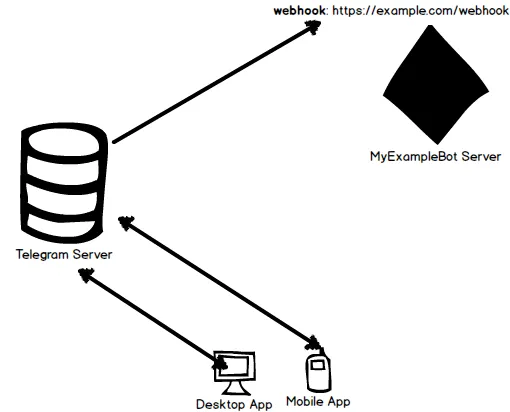Telegram机器人已准备就绪。
如果我们用浏览器和网站的比喻,Telegram客户端应用程序就像浏览器客户端。
Telegram聊天室则类似于网站。
假设我们有一些信息只想限制给特定用户,在网站上,我们会进行身份验证。
那么如何在Telegram机器人上实现同样的效果呢?
我被告知可以使用深层链接。请参见此处的说明。
我将在下面复制它:
- 创建一个适当的用户名为@ExampleComBot的机器人
- 设置接收消息的Webhook
- 生成一个足够长度的随机字符串,例如$memcache_key =“vCH1vGWJxfSeofSAs0K5PA”
- 将键值为$memcache_key,值为123的信息存储到Memcache中,有效期3600秒(一小时)
- 向用户展示按钮:https://telegram.me/ExampleComBot?start=vCH1vGWJxfSeofSAs0K5PA
- 配置Webhook处理器,使用传入消息中以“/start”开头的参数查询Memcached。如果键存在,则将chat_id记录为telegram_chat_id,并删除该键。
- 现在,当我们想向用户123发送通知时,请检查他们是否具有telegraph_chat_id字段。如果是,则使用Bot API中的sendMessage方法向他们发送Telegram消息。
我知道如何执行步骤1。
我想了解接下来的步骤。
这是我在尝试理解步骤2时所想象的图片。

因此,各种 Telegram 客户端在与其应用程序上的 ExampleBot 交流时会与 Telegram 服务器进行通信。通信是双向的。
第二步建议 Telegram 服务器通过 Webhook 更新 ExampleBot 服务器。Webhook 只是一个 URL。
到目前为止,我正确吗?
那么,使用此进行身份验证的下一步是什么?